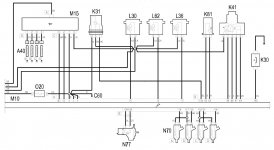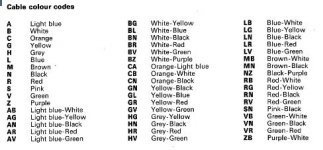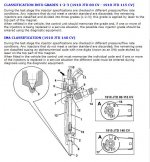Hi all
Am trying to source the issue that is causing my 2003 1.9 JTD to run rough. It runs fine once over about 1500 revs. So far have cleaned the EGR (now put blanking plates on both ends of the connecting pipe) which has got rid of the black smoke from the exhaust. With engine running I disconnected each injector lead, looking at them left to right as you stand in front of the engine bay the one furthest left (drivers side) made no difference when disconnected, the other 3 caused the engine to stall so there's obviously an issue around the first injector. I then went to the guide for testing electrical circuitry for the injectors. Not sure I followed it right as the guide is for a slightly different model.
I put my multimetre onto each injector and got the same resistance reading for each one which i think suggests the soleniod in each is fine. I then disconnected what I think is the D81 plug, situated at front of engine down by the bottom of the radiator, it's sitting on top of what looks to be part of the air flow system? The guide talks about the earth lead being obvious as it is the thickest, of the 5 wires going into my plug all were the same size. I made the assumption that the middle wire is the earth (coloured solid purple). I got totally contrasting resistance readings? Below are the colours with the corresponding readings:
white = 9.95 k ohms
white/green = 0.84 k ohms
purple = earth (i think)
black/white = 90 k ohms (this reading kept either dropping or increasing until out of range on the metre setting)
green = 2.12 k ohms
I'm either doing the test wrong or there's something seriously up with the wiring?? If anyone out there can help I'd be very grateful, just had a big bill for the other family car so could do with sorting this one myself.
Can provide pics if that would help explain what i'm looking at??
Am trying to source the issue that is causing my 2003 1.9 JTD to run rough. It runs fine once over about 1500 revs. So far have cleaned the EGR (now put blanking plates on both ends of the connecting pipe) which has got rid of the black smoke from the exhaust. With engine running I disconnected each injector lead, looking at them left to right as you stand in front of the engine bay the one furthest left (drivers side) made no difference when disconnected, the other 3 caused the engine to stall so there's obviously an issue around the first injector. I then went to the guide for testing electrical circuitry for the injectors. Not sure I followed it right as the guide is for a slightly different model.
I put my multimetre onto each injector and got the same resistance reading for each one which i think suggests the soleniod in each is fine. I then disconnected what I think is the D81 plug, situated at front of engine down by the bottom of the radiator, it's sitting on top of what looks to be part of the air flow system? The guide talks about the earth lead being obvious as it is the thickest, of the 5 wires going into my plug all were the same size. I made the assumption that the middle wire is the earth (coloured solid purple). I got totally contrasting resistance readings? Below are the colours with the corresponding readings:
white = 9.95 k ohms
white/green = 0.84 k ohms
purple = earth (i think)
black/white = 90 k ohms (this reading kept either dropping or increasing until out of range on the metre setting)
green = 2.12 k ohms
I'm either doing the test wrong or there's something seriously up with the wiring?? If anyone out there can help I'd be very grateful, just had a big bill for the other family car so could do with sorting this one myself.
Can provide pics if that would help explain what i'm looking at??





